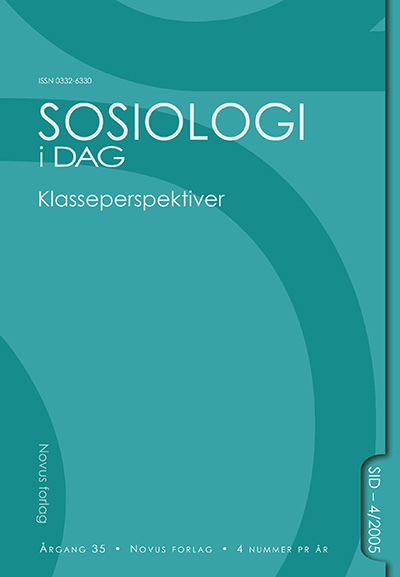Sammendrag
Abstract
One generation ago, class analysis was at the core of the discipline. Today, the concept is more seldom in use, and only in a small proportion of empirical analyses is class regarded as a critical explanatory variable. In a world of a growing gap between rich and poor and increasing reproduction of inequality, it is problematic that sociologists apparently lack relevant tools for grasping important mechanisms and processes. In this article three alternative responses to the present situation are discussed: Class as before (nearly), class as rent seeking, and classes as occupations. The presentation is illustrated by recent works of Stefan Svallfors, Aage B. Sørensen and David Grusky/Kim Weeden. The discussion is followed by a first, preliminary empirical evaluation, where conventional (nominal and graded) approaches are compared to an occupation-class version on a detailed level. Findings, based on data from the European Social Survey (ESS) suggest that the Grusky/Wedeen results are robust. Further empirical analyses are clearly needed, especially with alternative conceptualisations of detailed classes linked to the site of production or occupations. In the final part, possible collective efforts to improve the basis for class analysis within the Norwegian setting are discussed.
Key words: Class analysis, Occupation based classes, Site of production based classes, Conventional class analysis, Alternative class analysis
Authors who publish with this journal agree to the following terms:
Â
- Authors retain copyright and grant the journal right of first publication, with the work 1 year after publication simultaneously licensed under a Creative Commons Attribution License that allows others to share the work with an acknowledgement of the work's authorship and initial publication in this journal.
- Authors are able to enter into separate, additional contractual arrangements for the non-exclusive distribution of the journal's published version of the work (e.g., post it to an institutional repository or publish it in a book), with an acknowledgement of its initial publication in this journal.
